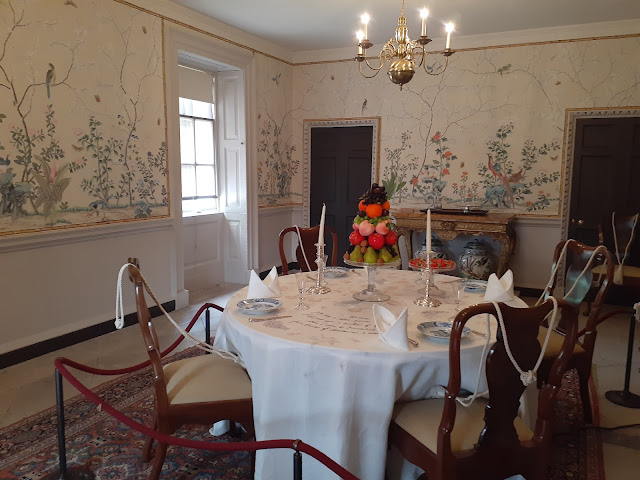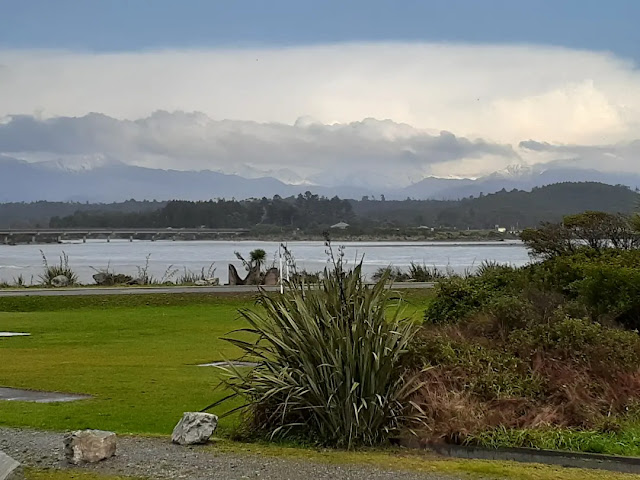The great thing about London is that no matter how many times you visit there is always something to see that you haven't seen before. Writer, Samuel Johnson (1709-1784), famously said "When a man is tired of London he is tired of life". Nothing could be truer, London always delights. On my many visits to London I had never taken a tour of Shakespeare's Globe Theatre, sure, I'd walked past it often enough but there always seemed to be hordes of tourists or school children lining up for a visit so I would just keep walking. Anyway, this visit I decided I just had to take a tour, it had been tantalising me for too long.
 |
Shakespeare's Globe Theatre, South Bank London
(photo by Diego Delso, delso.photo, license CC-BY-SA) |
The Theatre is the brainchild of American actor and director, Sam Wanamaker who had a dream of recreating the original Globe of 1599, close to its original site and as it was in Shakespeare's day. After finding the original site of the Globe theatre neglected and marked only by a blackened plaque, recreating the Globe became an obsession for Wanamaker. The original globe had burnt down in 1612 when a stage effect went wrong and set the thatched roof alight. The theatre was rebuilt in 1614 but was closed down in 1642 by the Puritans, who thought plays were the devil's work.
In 1970 Wanamaker founded the Shakespeare Global Trust with the aim of achieving his dream. It took 27 years with the Theatre eventually opening in 1997. Sadly he died in 1993 without seeing the theatre completed. Wanamaker's goal of reconstructing the theatre as near as possible to the original wasn't an easy task since there were no remaining plans or contracts, however, luckily there were some contemporary drawings and accounts of what the theatre was like. Other surviving buildings of the late 16th and early 17th century were studied, including the building contract for the Fortune Playhouse. He also had to battle with the local council who wanted to build an apartment block on the site. Despite all the barriers put in the way the result is believed to be realistic even accounting for the need to ensure modern safety requirements.
 |
Since a play was in rehearsal we were not permitted to photograph the stage
This photo is of an earlier production - note the groundlings (Jack1956) |
Although the recreated Globe theatre caters for audiences about half the size of those in Shakespeare's day it is as authentic as possible. It is built entirely of English oak with simple benches in galleries for seating, and an open to the sky pit for 'Groundlings' (those who stand to watch a play), which is now concreted but would originally have been earth strewn with straw. The Theatre also has the only thatched roof permitted in London since the Great Fire of London of 1666, albeit with special fire retardants and sprinklers. There is a modern lobby, restaurant, gift shop and visitors' centre and an adjoining smaller theatre, the Sam Wanamaker Playhouse which is modelled in Jacobean era style and used in the winter months.
 |
|
I found the tour completely absorbing. The guide was excellent, describing London of the 1500s and 1600s vividly. Acting and play performances were then regarded as rather suspect, and not seemly, so the playhouses were located on the South Bank away from the more 'decent' people of London on the other side of the Thames. Despite this plays drew huge crowds from all walks of life and the audience could be rowdy and raucous even to the point of throwing fruit and eggs at the actors. Beer was also consumed in large quantities during the play and with personal hygiene not being the best back then the groundlings, who paid 1 penny for a ticket, would be labeled 'stinkards' for obvious reasons. Shakespeare was a 12.5% shareholder in the theatre and due to its great popularity during its heyday this afforded him a comfortable income. The crest above the main entrance, written in Latin, translated to "The whole world is a playhouse"
.jpg)
Fortunately there were no stinkards around for my visit and we were lucky enough to sit in on a rehearsal for the upcoming play, I Joan, about Joan of Arc. It was fascinating watching the actors and directors at work and to see how the theatre operates. I thought the theatre was very beautiful and felt as if I had been transported back in time. You do not have to be a fan of Shakespeare to enjoy a visit to this wonderful theatre, it is a glimpse back into times past and an opportunity to admire outstanding craftsmanship. I'm so pleased I finally visited Shakespeare's Globe and as luck would have it there were no school groups or hordes of tourists on the day of my tour.
As an aside, one of the best books I have read in a long time is Hamnet by Maggie O'Farrell. It is a fictionalised account of Shakespeare's life and times. I found it utterly absorbing. Highly recommended.
#shakespearesglobetheatre #globetheatre


.jpg)
.JPG)


.jpg)










.JPG)















.jpg)








.JPG)





.jpg)






